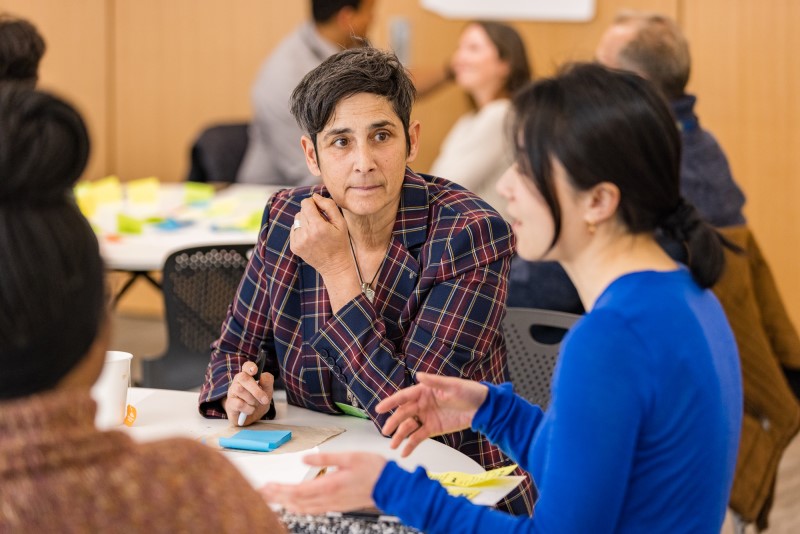Lisa Stambolis knows her way around many of the most forgotten neighborhoods—and most unequal health treatment systems—in Baltimore.
A pediatric nurse practitioner as well as a public health nurse with the Baltimore City Health Department, Stambolis has been providing health care to children and youth in Baltimore City—in school-based health centers, emergency shelters, and on the streets, for three decades. She has been active in several community coalitions aimed at helping homeless children and youth and is on the Community Advisory Board for the Youth Empowered Society (YES) and the Center for Adolescent Health at Johns Hopkins Bloomberg School of Public Health. As director of pediatric and adolescent health at Health Care for the Homeless Inc. in Baltimore City, Stambolis was instrumental in helping to pass legislation in Maryland allowing unaccompanied youth the right to consent to their medical treatment. She was a Robert Wood Johnson Executive Nurse Fellow (2014-2017) and received the Obama White House Champion of Change award for leadership in promoting health equity and social justice for youth.
Now, as senior project manager for Neighborhood Nursing Baltimore, she will lead Johns Hopkins’ bold plan to take health care to the streets, to homes too often missed, to people accustomed to too little care until it is almost too late.
The Johns Hopkins Nursing-led initiative would link every resident with a nurse/community health worker team going door to door, available by text or app, and stationed at schools, libraries, and senior centers. The idea is that, from birth to death, from prevention to palliative care, in any mental state, all people should have someone who literally meets them where they live, ready to listen to what matters to them. Care teams will have multiple strategies, abilities, and skills to support residents’ self-efficacy, connect them with other services, and provide care on the spot.
All residents would receive an in-person home visit once a year (if desired) and stay digitally connected via telehealth visits and additional in-person check-ins as needed based on individual needs. Residents with multiple chronic conditions, young children, or others at higher risk would receive more frequent visits. Neighborhood Nursing will link every resident with a nurse/community health worker team.
The potential benefits are obvious:
- Decreased hospital admissions
- Decreased hospital length of stay
- Reduced healthcare costs for insurers, providers, and patients
- Improved mental health through cognitive behavioral therapy
- Improved vaccination rates through increased access to and trust in health care
- Decreased maternal morbidity and mortality, and better infant outcomes
- Help over time to ease the nursing shortage (its model of coverage and efficiency making the current nationwide ratio of 1 nurse per every 80 residents far more robust)
- Equal and accessible care for all residents.
In a city like Baltimore that has 94% of residents insured yet such startling health disparities, Neighborhood Nursing would reduce structural barriers, both geographical and metaphorical.
Stambolis, who earned undergraduate and graduate degrees at the University of Maryland School of Nursing and a master’s degree in acupuncture at Tai Sophia Institute, Graduate School for the Healing Arts, is at the tip of the needle.
“Neighborhood Nursing has the potential to improve many crucial health indicators by focusing on prevention, amplifying wellness, and learning what matters most to people,” she explains, adding that teammates from the University of Maryland, Morgan State, and Coppin State nursing schools, in collaboration with community organizations such as Sisters Together and Reaching (STAR), are already meeting with community members.
And she’s got the perfect testing ground: Maryland, with its existing all-payor model for hospitalization and a looming review by Federal government regulators and state leadership at primary care financing and how all insurers can band together to fund better community care.
“Our hope is to co-design a model of care that works for the strengths and needs of each unique neighborhood,” Stambolis says.
